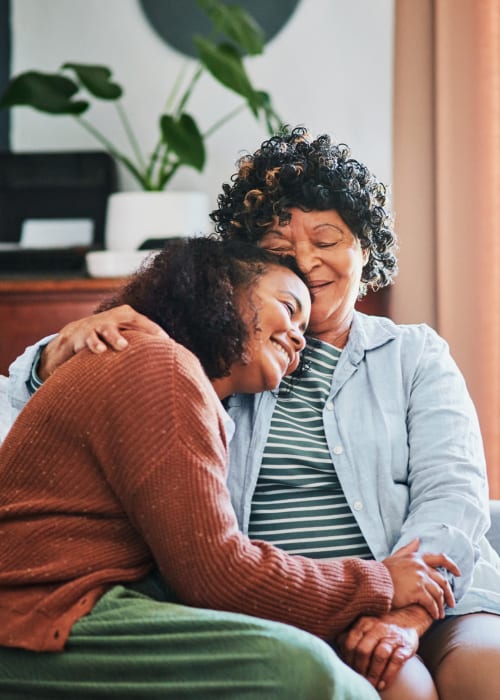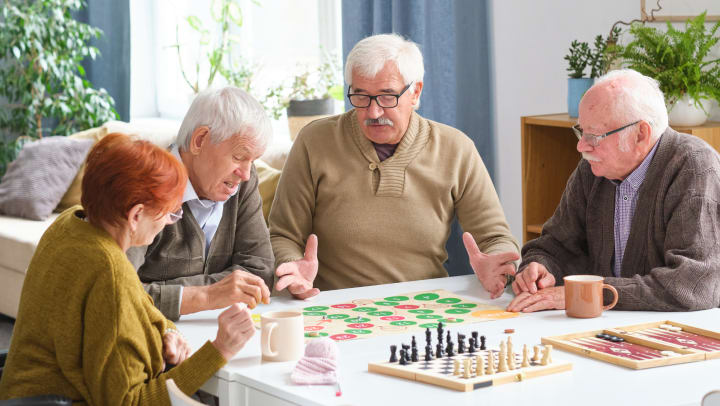The Power of Connection and Social Interaction for Senior Well-Being
More than one in three adults over 50 say they often go without meaningful connection. Among those facing ongoing health difficulties, that number climbs even higher, with more than half feeling cut off from others. These aren’t passing moods – they reflect ongoing patterns that can take a real toll, both mentally and physically. The data comes from a recent University of Michigan study, published in The Journal of the American Medical Association (JAMA).
Even so, disconnection often goes unnoticed. It doesn’t always show up in obvious ways. Instead, it can look like tiredness that won’t lift, canceled plans, or a lingering sense that something important is missing. For many older adults, the gradual loss of regular companionship – whether through retirement, changes in mobility, or the death of longtime friends – can shift how each day feels.
But this isn’t the whole picture. Just as distance can wear a person down, closeness has the power to lift them back up. For seniors, staying socially engaged isn’t simply a luxury – it’s a meaningful part of staying well, in body and mind. It’s also one of the most overlooked keys to aging well.
The Impact of Isolation: Understanding the Risks
As people age, their routines often shift. Retirement may reduce everyday social contact, adult children might live in other cities, and long-standing friendships can fade for reasons no one intends. These changes may come gradually, but over time, older adults may have fewer opportunities to feel connected, and the absence of connection may affect more than mood.
Often, the emotional impact shows up first. When social interaction becomes rare, some older adults begin to feel more withdrawn or weighed down, even if they don’t describe it that way. Depression and anxiety can develop slowly, and they're sometimes mistaken for just another part of growing older. Over time, that emotional wear can take a serious toll on senior mental health. Navigating daily life with the same confidence or clarity may become challenging.
The effects don’t stop there. A lack of interaction can also shape how the brain functions. Without the stimulation that comes from conversation, laughter, or learning something new, memory can begin to dull. There’s strong evidence that regular connection plays a key role in maintaining cognitive health in seniors, helping to keep thinking sharp and recall intact.
Physical health can be affected, too. People who are socially isolated are more likely to experience inflammation, elevated blood pressure, and lowered immune response. In short, when connection is missing, the body feels it – sometimes in ways that aren’t immediately visible.
Perhaps the most lasting effect is a change in how someone sees themselves. When meaningful relationships are scarce, it’s easy to start questioning where one fits or whether they still matter to others. That’s what makes a sense of belonging so central to emotional well-being in the elderly.
The Benefits of Social Connection: A Positive Force
If loneliness chips away at confidence and well-being, then connection rebuilds. Seniors who maintain regular social ties often describe a clearer sense of purpose and a steadier mood, even when other parts of life feel uncertain.
Sometimes, it’s the smallest exchanges that leave the biggest impression — a morning conversation over coffee, a familiar face across the dining table, or an impromptu joke shared on the way to an activity.
These simple moments offer reassurance and familiarity. Over time, they create a rhythm that many seniors come to rely on — one that brings emotional steadiness and a sense of ease.
Connection also keeps the mind engaged. Each interaction — whether planned or spontaneous — invites focus, memory, and responsiveness. These everyday moments help sustain cognitive health in seniors by reinforcing attention, language, and social awareness as habits that keep us in motion.
These mental and emotional habits aren’t all that different from physical ones. People who feel connected tend to move more, eat better, and stick with the actions that support their health. Shared experiences bring natural motivation — a reason to stay involved, and a reminder of what feels good.
At a deeper level, social interaction for seniors offers something harder to measure but easy to recognize — a feeling that we still belong. When that feeling becomes part of someone’s day, everything else tends to get a little easier.
Senior Living Communities: Fostering Social Engagement
Moving into a senior living community often brings more than access to care — it can also be the beginning of something personal: the return of steady companionship. These communities are designed to encourage interaction, supported by thoughtfully designed community amenities that make engagement feel easy and meaningful.
What gives a community its energy are the moments that fill it. Group classes, seasonal celebrations, visiting musicians, and art workshops offer natural ways for residents to show up, connect, and enjoy. But not all connections are scheduled. Some of the most lasting relationships take shape in ordinary places — a spontaneous laugh during a game of cards in one of the welcoming community rooms.
Meals, too, play a role far beyond nutrition. At The Pillars of Hermantown, social dining is part of the culture, not just a time to eat, but a time to connect. These shared meals often become something residents look forward to: familiar, welcoming, and filled with conversation.
Staff are an important part of this environment. Beyond caregiving, they act as quiet facilitators, noticing who enjoys group activities, who might prefer smaller gatherings, and helping new residents settle in with confidence. That kind of attentiveness makes a difference in how quickly someone begins to feel at home.
Senior living social programs like these aren’t just about staying occupied. They’re about building consistency and comfort — a kind of connection that feels natural and lasting. This is what senior community engagement looks like at its best.
Practical Tips for Increasing Social Interaction
Not all older adults live in community settings, and not every opportunity for connection comes from a program. Many meaningful interactions grow from small routines or shared interests.
Hobbies are often a natural starting point. Whether it’s painting, reading, or gardening, connecting with others through common interests can open the door to conversation. Community centers, local clubs, and libraries are good places to begin — and even one or two visits can start to feel familiar.
Volunteering also opens pathways to connection. Offering time to a local cause or mentoring a young person provides purpose while introducing new social circles.
For those who live alone or find it difficult to get out, technology can bridge the gap. Video calls, online book groups, or even multiplayer games allow seniors to stay engaged from home. These kinds of virtual interactions can help reduce senior loneliness and keep older adults connected in meaningful ways.
Simple rituals matter, too. A regular walk with a neighbor, a weekly phone call, or a visit to a familiar café can offer rhythm and connection without needing much planning.
Through both elderly social activities and everyday moments, social connection is always within reach, and the benefits grow with time.
Conclusion
Connection isn’t just meaningful — it’s necessary. At every stage of life, being recognized, included, and valued shapes how we think, feel, and relate to the world. For older adults, those relationships support clarity, confidence, and joy.
At Pillars communities, connection is part of the foundation. From morning greetings to group events, from staff support to shared meals, everything is designed to support social interaction for seniors in ways that feel natural and lasting.
This isn’t an extra. It’s the core of how we create a life that feels full, and for families making decisions, it’s worth asking not just what’s offered, but how it feels to be part of the community.
We’d love to show you what that looks like at The Pillars of Hermantown. Learn more about how we prioritize senior community engagement every day.


